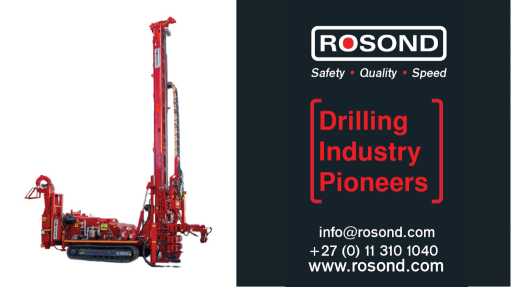ASP Fire offers complete solutions for highly hazardous environments
This article has been supplied.
From concentrated solar power (CSP) systems to oil-seed extraction plants, printing plants, and even explosives manufacturing facilities, fire engineering specialist ASP Fire offers a range of solutions for highly hazardous environments.
Fire risk in an industrial environment is often not localised to a specific area, which means that any potential hazards are not easy to identify and mitigate as a result, ASP Fire CEO Michael van Niekerk highlights.
Environments where there is a risk of flammable vapour discharge calls for a different focus, as any kind of ignition must be prevented from occurring. “Stopping a fire before it starts is the fundamental approach we adhere to,” van Niekerk stresses.
If a particular industrial environment poses any danger of flammable vapour being emitted, then it has to be ventilated accordingly. In addition, detection equipment has to be installed that can trigger emergency ventilation if need be.
If this measure by itself is insufficient, special foam-pouring equipment can also be installed to spray a foam layer over any large solvent spill, thereby preventing it from evaporating and forming a flammable vapour.
“An atmosphere containing combustible dust can be more dangerous than an atmosphere containing flammable vapour,” van Niekerk points out. When vapour burns, the concentration of fuel in the air might be 1.7% by volume.
Solid dust particles, on the other hand, contain more energy, and hence any explosion here is much more violent. That is why sugar mills and flour mills, for example, generally blow up in the event of a dust explosion.
Any primary ignition in a hazardous environment can also result in dust layers on the roof of the building or even on the window sills to be suspended and pose a threat for ignition. Here the potential secondary explosion can be much more devastating than the initial event. “Hence we deploy ventilation and dust extraction to mitigate any fallout from the presence of dust,” van Niekerk elaborates.
Hazardous industrial environments with flammable vapour atmospheres are classified as different zones according to the risk, from Zone 0 (the highest risk) to Zone 1 and Zone 2 (lower risk), while atmospheres with combustible dust are classified as Zone 20 (the highest risk), to Zone 21 or Zone 22 (lower risk).
“Our main goal is to prevent any ignition sources,” van Niekerk stresses. Here electrical equipment has to be protected, for example, by using tried-and-tested methods such as static bonding or encapsulation with flame proof enclosures. Real-time measuring equipment can even be installed to ensure that the 10 Ω threshold for static build-up is not exceeded.
“Preventing any explosion is critical. If you do have an ignition in a hazardous area, it is more likely that there will be an explosion instead of a fire. That is to be avoided at all costs. Sprinkler, deluge and gas suppression systems are redundant in such an instance, as these measures are only triggered after the explosion has occurred,” van Niekerk stresses.
He urges that workers and management in highly hazardous industrial environments must become fanatical about fire safety. “It is important not only to install the correct equipment, but to ensure that all workers receive rigorous training in risk identification and mitigation,” van Niekerk concludes.
Article Enquiry
Email Article
Save Article
Feedback
To advertise email advertising@creamermedia.co.za or click here
Comments
Press Office
Announcements
What's On
Subscribe to improve your user experience...
Option 1 (equivalent of R125 a month):
Receive a weekly copy of Creamer Media's Engineering News & Mining Weekly magazine
(print copy for those in South Africa and e-magazine for those outside of South Africa)
Receive daily email newsletters
Access to full search results
Access archive of magazine back copies
Access to Projects in Progress
Access to ONE Research Report of your choice in PDF format
Option 2 (equivalent of R375 a month):
All benefits from Option 1
PLUS
Access to Creamer Media's Research Channel Africa for ALL Research Reports, in PDF format, on various industrial and mining sectors
including Electricity; Water; Energy Transition; Hydrogen; Roads, Rail and Ports; Coal; Gold; Platinum; Battery Metals; etc.
Already a subscriber?
Forgotten your password?
Receive weekly copy of Creamer Media's Engineering News & Mining Weekly magazine (print copy for those in South Africa and e-magazine for those outside of South Africa)
➕
Recieve daily email newsletters
➕
Access to full search results
➕
Access archive of magazine back copies
➕
Access to Projects in Progress
➕
Access to ONE Research Report of your choice in PDF format
RESEARCH CHANNEL AFRICA
R4500 (equivalent of R375 a month)
SUBSCRIBEAll benefits from Option 1
➕
Access to Creamer Media's Research Channel Africa for ALL Research Reports on various industrial and mining sectors, in PDF format, including on:
Electricity
➕
Water
➕
Energy Transition
➕
Hydrogen
➕
Roads, Rail and Ports
➕
Coal
➕
Gold
➕
Platinum
➕
Battery Metals
➕
etc.
Receive all benefits from Option 1 or Option 2 delivered to numerous people at your company
➕
Multiple User names and Passwords for simultaneous log-ins
➕
Intranet integration access to all in your organisation














